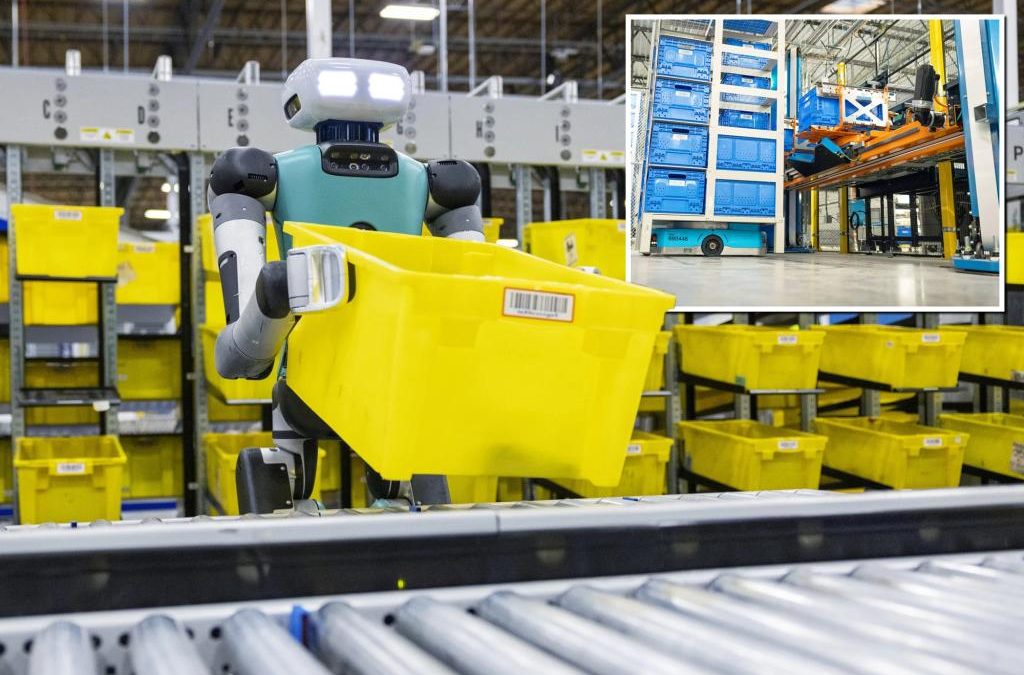Amazon will add a slew of new robotics and artificial intelligence-technologies at its warehouses in an effort to reduce delivery times and speed up inventory operations — and limit injuries, the e-commerce behemoth said Wednesday.
The high-tech upgrade — which debuted at a warehouse in Houston this week — will be rolled out across the company’s 300 robotics operations sites worldwide come 2024 based on how it performs through the holiday season, an Amazon spokesperson told The Post.
The robotics system, named Sequoia after the colossal trees native to California’s Sierra Nevada region, brings together a series of systems including mobile robots and robotic arms.
It will also allow Amazon to list items for sale on its website faster, and will be able to more easily predict delivery estimates, the company’s director of robotic storage technology, David Guerin, told The Wall Street Journal.
Sequoia is expected to reduce the time it takes to fulfill an order by up to 25%, and can identify and store inventory as much as 75% faster, Guerin said.
It is unclear whether the new system will lead to any layoffs at the warehouses.
Amazon noted the company has “rolled out hundreds of thousands of robotics systems while also creating hundreds of thousands of new jobs.”
Last month, Amazon announced it was hiring 250,000 employees for the holidays, and bumped up hourly wages.
Amazon has been investing aggressively in automation for years, using the tech to package orders and creating technology that enables cashier-less retail stores, among others.
Sequoia “works by having mobile robots transport containerized inventory directly to a gantry, a tall frame with a platform supporting equipment that can either restock totes or send them to an employee to pick out inventory that customers have ordered,” Amazon explained.
The system’s integrated robotics system — equipped with small robotic arms and computer vision — then hand off the empty bins to an employee who will pick items for delivery.
Sorting was previously done by humans, who may have had to reach high shelves to pick out heavy items.
However, robots will now do the heavy lifting — literally — and deliver a sorted container to an actual person at waist level to prevent injury in the final step of the packaging process.
Amazon touted in its release that injury incidents were 15% lower in 2022 than the year prior despite upping the amount of robots involved in its operations.
Remaining inventory will be consolidated by the Sparrow sporting robot, a gooseneck-like robotic arm that Amazon debuted in its warehouses last year.
Guerin told The Journal that he expects the system to make up a significant portion of the company’s operations in the next three to five years.
“The faster we can process inventory, the greater the probability that we’re going to be able to deliver when we said we could,” he said.
Also Wednesday, Amazon said it has plans to begin testing Digit, a humanoid-type robot that mimics human behaviors and can be programmed to perform certain tasks.
“Digit can move, grasp, and handle items in spaces and corners of warehouses in novel ways,” Amazon said, noting that the robot can also “work collaboratively with employees.”
The new tech will see robots helping with a process referred to internally as tote recycling, which Amazon described as “a highly repetitive process of picking up and moving empty totes once inventory has been completely picked out of them.”
Source




